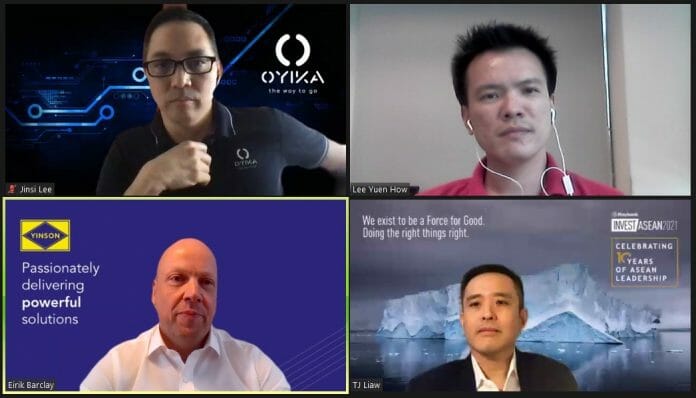A clear policy coupled with incentives will change consumer behaviour and attract investments to supercharge electric vehicle (EV) adoption, according to industry players speaking at Maybank Kim Eng’s “The Rise of ASEAN EV” webinar today.
Having clear timelines for EV adoption and phasing out of internal combustion engine vehicles (ICEV), incentives for EV and disincentives for ICEV will increase the demand for EV. Investments will follow suit, including on charging infrastructure and stability of power.
Citing Norway’s experience, Eirik Barclay, Group Executive Vice President, New Venturesand Technology, Yinson Holdings said that there was never a subsidy for EV; instead, thegovernment increased taxes on ICEV and fuel. This also meant that the government did not lose revenue.
Eirik believes that these measures, and the removal of fuel subsidies, will result in consumerschoosing EV over ICEV due to cost of ownership.
Range anxiety remains a concern among consumers, although most do not usually drive morethan 100km on a typical day. This can be mitigated with a well-planned charginginfrastructure.
Lee Yuen How, Director, EV Connection Sdn Bhd said that all stakeholders such asautomotive original equipment manufacturers (OEMs), oil and gas companies, utilitycompanies, charge point operators and the government should work together to build the infrastructure.
“If you leave it to the private sector, they will only build the charging infrastructure wherethere are high concentrations of EV users, leaving the semi-urban and rural areas to becomeEV-charging desert. Therefore the government plays an important role in ensuring investmentacross all areas,” he added.
Jinsi Lee, Founder and Chief Executive Officer, Oyika espoused a separation between thebattery and the electric vehicle for environmental and regulatory benefits.
“The party that sells the vehicle must be responsible for the battery across its entirelifecycle, instead of transferring ownership to the vehicle buyer. The seller will be requiredto take the battery back, recycle it and reuse it as second life storage, decommission it and so on,” he said.
“From a consumer’s point of view, if the battery is leased, then one can buy a second-handEV and still get the latest battery technology. We are doing this for motorbikes, I don’t seewhy we can’t do it for vans, trucks and cars,” he added.
Maybank Kim Eng Research predicts that sales of EVs will reach parity with ICEVs by 2030, driven by the global decarbonisation agenda and millennial consumer preferences, among others.
ASEAN countries are progressively updating their EV roadmaps. Malaysia and the Philippines are the laggards in the EV race in ASEAN. The former’s Low Carbon Mobility Blueprint is an important catalyst, however more focus should be on battery EV instead of plug-in or hybrid EV to be fully on the decarbonising agenda, while the latter’s EV roadmap still lacks clarity and direction.
ASEAN should look at China and pure-EV companies for partnerships and investment, and pursue green technology such as hydrogen at the same time.
The webinar was the ninth in the Invest ASEAN 2021 series, Maybank Kim Eng’s flagship annual investor conference. The final conversation on ASEAN outlook and strategy featuring MKE’s heads of research will take place on 5 August 2021.









